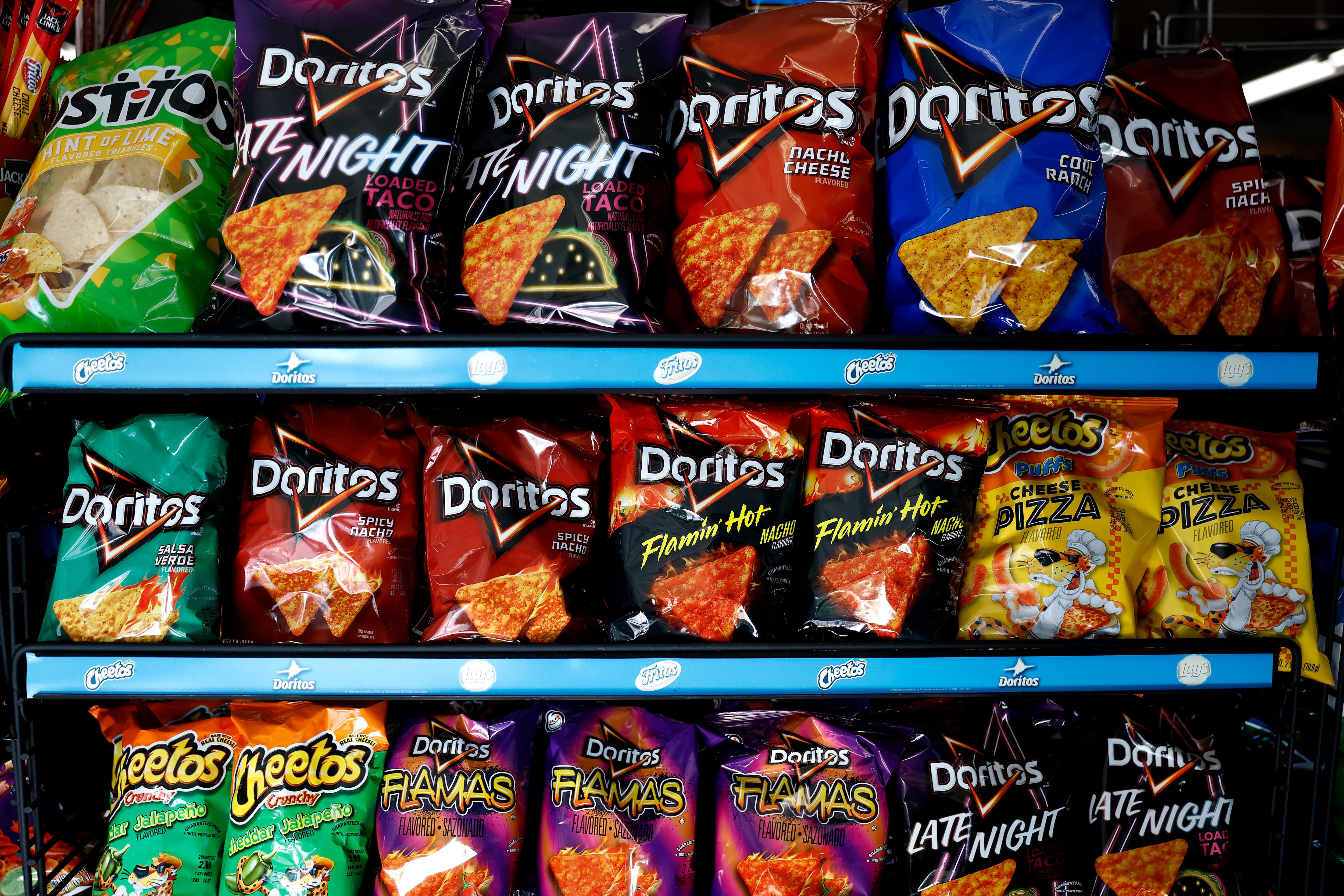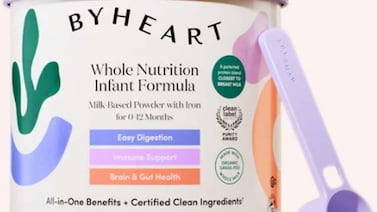Public health, explained: Sign up to receive Healthbeat’s free New York City newsletter here.
Long Island mom Stefanie Lomuto’s 7-year-old son came home from school one day in April angry and hyperactive. “He was off the wall,” she said.“We were in hell for five days.”
She asked what he had for lunch. A bagel with yogurt. “I was, like, what kind of yogurt did you have? And he’s, like, strawberry. I was, like, oh, no.” She contacted the school and learned that yes, the pink yogurt contained food dye.
When Lomuto’s son was 3 and having behavioral and impulse control issues, she came across an article that recommended cutting out food additives. “First thing we cut out was high fructose corn syrup. We saw a bit of an improvement. Food dyes were the next one on the list. I cut those. And our issues drastically went away.”
The family saw a huge improvement in his behavior, but since then he has become more sensitive to dyes than ever. “He has one maraschino cherry, and our whole week is just destroyed,” she said.
While Lomuto makes sure not to let her son eat artificially colored foods at home, she can’t control what happens at school. His teachers know that he’s dye-free, and Lomuto sends him with his own cupcakes for class parties, but the food that the cafeteria sells is harder to track.
“His friends are buying ice pops, and he asked me for a dollar to buy an ice pop,” she said. “I can’t even let the kid have a simple ice cream at school like his friends.”
Studies have consistently found that artificial food colorings including Red 40, Yellow 5 and 6, and Blue 1 and 2, can make some children hyperactive, inattentive, and irritable. In early 2025, Red 3 was banned in U.S. food products; it was originally banned in cosmetics in 1990 due to cancer links.
Since 2010 in Britain and the European Union, any food containing artificial dyes must carry a warning label that the additives may cause hyperactivity. Many manufacturers stopped using them. But in the United States, until this year, the Food and Drug Administration had stated that dyes were safe, while acknowledging that “some children may experience sensitivities.”
RFK Jr. asks food producers to phase out dyes, but it’s not mandatory
Artificial food dyes are everywhere: in Cheetos, Jolly Ranchers, applesauce, pickles, spinach wraps, ice cream, even Tylenol. A 2016 study found that dyes were present in 43% of the foods marketed to children in a single grocery store.
New Health and Human Services Secretary Robert F. Kennedy Jr. has made food dyes a pillar of his crusade against chronic illness. In March, he directed the FDA to request that food producers phase out dyes by 2026. Compliance will be voluntary.
“Everyone realized they weren’t talking about actual regulations or a regulatory ban,” said Jensen Jose of the Center for Science in the Public Interest, which has advocated removal of dyes from children’s food. “We’re disappointed in the limited scope.”
New York City public schools already ban a range of additives, preservatives, and sugar alternatives. A bill in the state legislature seeks to ban six common dyes from food served in public schools, but it did not pass this year.
It was drafted by State Assembly Member Dr. Anna Kelles, who holds a PhD in nutritional epidemiology, and State Sen. Brian Kavanaugh, who began working on the issue several years ago after learning about artificial dyes at a conference.
“As more and more legislators become educated about the dangers of these foods, you gain greater support,” said Stanley Davis, a spokesman for Kavanaugh.
Parents of dye-sensitive children said the legislation could change their lives.
“It would be huge,” said Christine Einzig of Corinth, New York, who has 7-year-old triplets who are sensitive to dyes. “We would see a change in behavior for so many kids.”
Behavior of all 300 children in one study was impacted by dyes
What persuaded policymakers in Europe and the United Kingdom to regulate dyes was a 2007 study conducted by researchers at the University of Southampton.
The study followed 300 3- and 8-year-olds who did not have any known behavioral or attention problems. After removing dyes from their home diets, scientists gave the children an identical-looking fruit-flavored drink each day — sometimes containing artificial dyes, sometimes not. Parents, teachers, and external observers recorded the children’s behavior daily, without knowing which ones had consumed the artificial dyes. In addition, the 8-year-olds were given a computerized attention test.
All the children in the study, including ones who had not previously been identified as sensitive, were impacted by dyes. “These changes shift the children along the hyperactivity scale. For children who are already predisposed to attention problems, the impact of dyes can move them far enough up that scale to cause a real problem.” said Dr. Jim Stevenson, the author of the study.
The paper estimated that about 10% of the difference between the behavior of children with ADHD and those without could be attributed to dyes.
“It’s a public health issue, because you cannot identify the kids who are going to react. So the best thing to do is take the dyes out of the food. In Europe, and Britain too, we operate on a precautionary principle. If we have a concern that something may have an effect, then let’s take action,” Stevenson said.
Lisa Lefferts was a part of the 2011 FDA panel tasked with deciding whether U.S. foods should carry warning labels for dyes.
“They did not ask us if we thought dyes were safe,” she said. “What they did ask us is if we thought a causal relationship had been established for certified color additives and hyperactivity.”
In 2011, she said, scientists were not sure about the causal link between hyperactivity and dyes – and the FDA decided not to ask a direct question about whether dyes caused any other kind of “harm.” Looking just at hyperactivity limited the scope of the panel and the power it had to make recommendations – but “they did not ask us if we thought dyes were safe,” Lefferts said.
Limiting children’s exposure to dyes can be burden for parents
In 2021, the California Office of Environmental Health Hazard Assessment published a systematic meta analysis of 27 studies of dyes, exploring their impact on humans and animals. The finding was consistent with the UK study – and with the parental perception – that synthetic dyes impact neurobehavior in some children. And, these days, Lefferts puts a lot of stock in its findings.
“It was informed by a scientific symposium. They asked for public information. They put the report out for public review and comment, as well as peer review,” she said.
And while some officials suggest that parents should be responsible for keeping their children away from food dyes, parent advocates say that could be an undue burden for people who lack educational advantages or are financially struggling.
“Our child had a mother that had the opportunity and the time to investigate. I make all the grocery trips, I spend extra for the treats. There are many families that don’t have that same opportunity,” said Whitney Cawood, director and producer of To Dye For: A Documentary.
Cawood and her husband, who live in Dalton, Georgia, created the documentary, interviewing legislators, scientists, and families to understand how dyes made it into American food and the impact the additives have on individual children and their families.
A former teacher, Cawood said many single parents, parents who struggle with literacy, or those who don’t drive, may not have the resources or awareness to seek out dye-free options. She points out that schools are also a place where students have less control over their diet.
“Many families are dependent upon free and reduced [price] lunch and snack programs within their schools,” she said.
Einzig echoes this sentiment in New York.
“We’re in a poorer part of the state,” she said, “and we only have one grocery store in town.” Other parents, she said, might not have the time or the money to go to another store half an hour away.
There’s no medical name or test for a dye sensitivity, but about 8% of children with ADHD were particularly affected, according to a 2012 study in the Journal of the American Academy of Child & Adolescent Psychiatry.
“You want to know the worst thing right now?” Einzig said. Her son has been prescribed a new ADHD medication – “and it’s pink. Why is it pink?”
She is referring to an extended-release version of Vyvanse that contains Blue No. 1, Red No. 3 and Yellow No. 6. Lomuto has had the same experience. “The capsule is pink, but the pill [inside] supposedly doesn’t have dyes - so there’s a chewable version I’m now trying to get.” However, her insurance won’t cover that version because her son can technically swallow a capsule. “Why are we feeding him this thing that’s making him hyper while giving him the medication to make him not hyper? You can’t make that make sense,” she said.
Although not all children are equally sensitive to dyes, children can be affected by the behaviour of their classmates. Even one child struggling to regulate themselves in a class can disrupt teaching for an entire day, educators say. A research overview from Ohio State University in 2012 found that the presence of a child with a dye reaction “may have an aggregated effect on classroom climate.”
Einzig sees this as an important issue to make education better for all children. “How much time are these teachers actually spending teaching, versus behavior management?” she asked.
Einzig hopes that nationwide legislation will eventually phase out all dyes so her kids can go back to eating their favorite foods. “They talk about Doritos a lot,” she said. She’s found another type of cheesy nacho chip that they like – “but, I know they miss it.”
This story was produced in partnership with the Health & Science Reporting Program at the Craig Newmark Graduate School of Journalism at CUNY.







